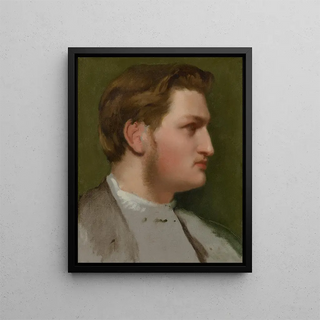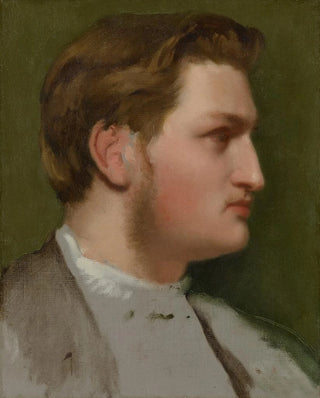Painting Portrait of Paul Valpinçon - Edgar Degas | Art print


View from behind

Frame (optional)
Portrait of Paul Valpinçon - Edgar Degas – Captivating Introduction
In the fascinating world of art, some works stand out for their ability to capture the essence of a moment, a personality. The "Portrait of Paul Valpinçon" by Edgar Degas is one of these remarkable creations. Created at the end of the 19th century, this painting offers an intimate glimpse into the mind and sensitivity of its subject, Paul Valpinçon, a close friend of the artist. With unparalleled mastery of colors and textures, Degas manages to transcend mere representation to immerse the viewer in an atmosphere filled with delicacy and emotion. This work is not just a portrait; it becomes an open window into the human soul, inviting everyone to feel the depth of the bonds that unite the artist and his subject.
Style and uniqueness of the work
Edgar Degas's style is characterized by his innovative approach to movement and light. In the "Portrait of Paul Valpinçon," the artist deploys a palette of subtle colors, oscillating between warm and cool tones, which give an almost lifelike dimension to his subject. Valpinçon's pose, both relaxed and thoughtful, reveals rare intimacy, while the meticulous details of the clothing and facial features testify to a deep concern for realism. Degas, a true master of pastel, uses techniques that highlight textures and shadows, allowing light to play on the model's face. Each brushstroke seems charged with palpable emotion, making the viewer complicit in this frozen moment in time. The composition, both simple and powerful, emphasizes Valpinçon's personality while evoking an atmosphere of serenity and contemplation.
The artist and his influence
Edgar Degas, an emblematic figure of the Impressionist movement, distinguished himself with his unique approach to painting. Unlike his contemporaries, he did not merely depict scenes of everyday life outdoors; he preferred to explore the intimacy of enclosed spaces and human interactions. His friendship with personalities such as Paul Valpinçon allowed him to immerse himself in diverse worlds, enriching

Matte finish

View from behind

Frame (optional)
Portrait of Paul Valpinçon - Edgar Degas – Captivating Introduction
In the fascinating world of art, some works stand out for their ability to capture the essence of a moment, a personality. The "Portrait of Paul Valpinçon" by Edgar Degas is one of these remarkable creations. Created at the end of the 19th century, this painting offers an intimate glimpse into the mind and sensitivity of its subject, Paul Valpinçon, a close friend of the artist. With unparalleled mastery of colors and textures, Degas manages to transcend mere representation to immerse the viewer in an atmosphere filled with delicacy and emotion. This work is not just a portrait; it becomes an open window into the human soul, inviting everyone to feel the depth of the bonds that unite the artist and his subject.
Style and uniqueness of the work
Edgar Degas's style is characterized by his innovative approach to movement and light. In the "Portrait of Paul Valpinçon," the artist deploys a palette of subtle colors, oscillating between warm and cool tones, which give an almost lifelike dimension to his subject. Valpinçon's pose, both relaxed and thoughtful, reveals rare intimacy, while the meticulous details of the clothing and facial features testify to a deep concern for realism. Degas, a true master of pastel, uses techniques that highlight textures and shadows, allowing light to play on the model's face. Each brushstroke seems charged with palpable emotion, making the viewer complicit in this frozen moment in time. The composition, both simple and powerful, emphasizes Valpinçon's personality while evoking an atmosphere of serenity and contemplation.
The artist and his influence
Edgar Degas, an emblematic figure of the Impressionist movement, distinguished himself with his unique approach to painting. Unlike his contemporaries, he did not merely depict scenes of everyday life outdoors; he preferred to explore the intimacy of enclosed spaces and human interactions. His friendship with personalities such as Paul Valpinçon allowed him to immerse himself in diverse worlds, enriching
12,34 €






